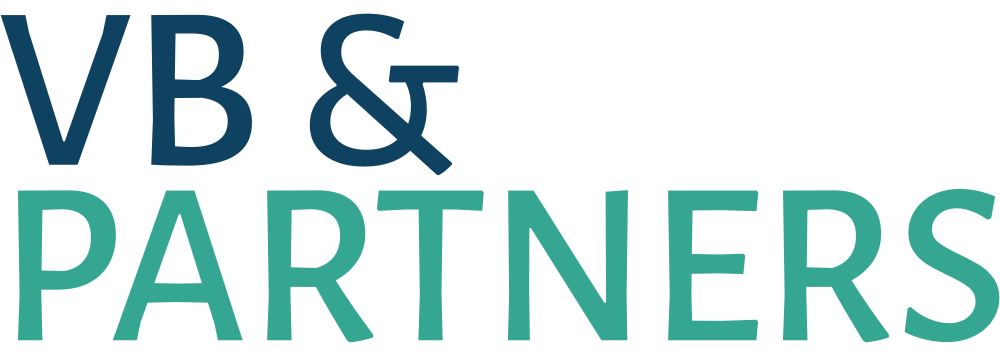Résumé : L’importation de marchandises en Thaïlande entraîne plusieurs obligations fiscales, notamment la taxe à l’importation, les droits de douane, la TVA de 7 %et, dans certains cas, la taxe d’accise. Il est essentiel de maîtriser votre statut d’importateur, les méthodes d’évaluation et les exigences documentaires afin d’assurer une comptabilité précise et le respect des règles applicables. Les sanctions en cas de non-conformité peuvent être particulièrement sévères..
Introduction
La Thaïlande demeure une destination stratégique pour le commerce international en Asie du Sud-Est, offrant aux entreprises étrangères un accès privilégié à un réseau logistique performant et à un marché en pleine expansion. Toutefois, malgré son fort potentiel, l’importation en Thaïlande présente une complexité notable, notamment en matière de conformité fiscale et comptable.
Les importateurs doivent naviguer dans un cadre réglementaire à plusieurs niveaux, incluant la taxe à l’importation, les droits de douane, la taxe sur la valeur ajoutée (TVA) et, dans certains cas, la taxe d’accise ou d’autres taxes internes. Au-delà des obligations fiscales, les entreprises doivent également maîtriser l’enregistrement en tant qu’importateur, la classification des produits, les méthodes d’évaluation, ainsi que les nombreuses exigences documentaires requises. Un comptable expérimenté en Thaïlande peut aider à coordonner ces obligations pour réduire les risques de non-conformité.
Cet article examine les principales obligations fiscales et comptables liées à l’importation en Thaïlande en 2026, afin d’aider les entreprises à mieux planifier leurs opérations, à éviter les pénalités et à tirer parti des opportunités de réduction des coûts, telles que les accords de libre-échange et les incitations du BOI..
Points clés
- Tous les importateurs commerciaux doivent s’enregistrer auprès des douanes thaïlandaises et obtenir une licence électronique (carte douanière) valable trois ans, permettant l’accès au système e-Customs pour le traitement électronique des importations.
- Les marchandises importées sont soumises à plusieurs taxes : les droits d’importation (de 0 à 80 % selon le code SH), la TVA obligatoire de 7 % sur toutes les marchandises, quelle que soit leur valeur (nouvelle règle entrée en vigueur en 2024), ainsi que des taxes d’accise supplémentaires sur certains produits, comme les articles de luxe, l’alcool et le tabac.
- Le dédouanement exige de fournir de nombreux documents, notamment les déclarations d’importation, les factures commerciales, les connaissements, les certificats d’origine, les certificats de TVA, ainsi que les permis spéciaux pour les marchandises soumises à des restrictions.
- Certains produits sont interdits (stupéfiants, contrefaçons, cigarettes électroniques), tandis que d’autres nécessitent des permis spécifiques délivrés par les agences gouvernementales compétentes (médicaments, appareils électroniques, machines, produits alimentaires) avant d’être autorisés à l’importation.
- Les manquements aux règles peuvent entraîner des surtaxes douanières de 1,5 % par mois, des amendes pouvant atteindre 200 % des taxes impayées, et dans les cas graves, des sanctions pénales, incluant des amendes pouvant aller jusqu’à 500 000 bahts et des peines d’emprisonnement pouvant atteindre 10 ans.
Comprendre le cadre fiscal applicable aux importations en Thaïlande
La Thaïlande impose une structure fiscale à plusieurs niveaux sur les importations, incluant les droits de douane, la taxe sur la valeur ajoutée (TVA) et, dans certains cas, les droits d’accise et autres taxes intérieures. Ces obligations concernent tous les importateurs commerciaux et doivent être calculées et déclarées avec rigueur afin d’assurer le respect des exigences fiscales et comptables.
Droits d'importation en Thaïlande
Ils sont calculés soit selon un taux fixe, soit selon une méthode ad valorem (pourcentage de la valeur). Les taux varient de 0 % à 80 %, en fonction de la classification du code SH.
TVA sur les importations
Depuis une modification réglementaire en 2024, une TVA de 7 % est appliquée sur toutes les marchandises importées, quelle que soit leur valeur. La TVA est calculée sur la valeur CIF (coût, assurance, fret) majorée des droits et frais applicables.
Taxe d’accise et taxes locales en Thaïlande
Les taxes d’accise concernent certaines marchandises spécifiques, telles que l’alcool, le tabac et les articles de luxe. Dans de nombreux cas, une taxe intérieure supplémentaire de 10 % s’ajoute à la taxe d’accise.
Exemple de calcul de la taxe à l'importation en Thaïlande
La Thaïlande applique un taux standard de TVA de 7 % sur toutes les marchandises importées. Cette taxe est calculée sur le coût total au débarquement (CIF), incluant le coût, l’assurance, le fret, ainsi que les droits de douane et autres frais applicables. La méthode CIF constitue le système officiel utilisé par les douanes thaïlandaises pour déterminer la base imposable des droits et de la TVA à l’importation.
Exemple de calcul de la taxe à l’importation taxe à l’importation en Thaïlande :
Scénario 1 : marchandises générales (par exemple, appareils électroniques, vêtements)
Supposons que la valeur CIF des marchandises soit de 10 000 bahts et que le taux des droits d’importation soit de 10 % :
- Droits d’importation : 10 000 × 10 % = 1 000 bahts
- Base de la TVA : valeur CIF + droits d’importation = 10 000 + 1 000 = 11 000 bahts
- TVA à payer : 11 000 × 7 % = 770 bahts
- Total des taxes à payer : 1 000 (droits) + 770 (TVA) = 1 770 bahts
Scénario 2 : Marchandises soumises à des taxes supplémentaires (par exemple, articles de luxe, alcool)
Certains produits, notamment les articles de luxe, l’alcool, le tabac et les produits pétroliers, sont également soumis à des droits d’accise, ce qui peut considérablement augmenter le montant total des taxes à payer.
Par exemple, pour un produit d’une valeur CIF de 200 USD (environ 7 300 THB), soumis à un droit d’importation de 60 %, une taxe d’accise de 30 % et une taxe intérieure de 10 % sur la taxe d’accise, le montant total des taxes peut être très élevé.
- Droits d’importation : 200 USD × 60 % = 120 USD
- Assiette de la taxe d’accise : (valeur CIF + droits d’importation + frais). (En supposant des frais fixes de 50 USD pour cet exemple, conformément à l’extrait).
- (200 + 120 + 50) = 370 USD
- Taxe d’accise : 370 × [0,3 ÷ (1 – 1,1 × 0,3)] = 370 × 0,4477612 ≈ 165,67 USD
- Taxe intérieure : 165,67 × 10 % ≈ 16,57 USD
- Base de la TVA : (valeur CIF + droits d’importation + frais + taxe d’accise + taxe intérieure = 200 + 120 + 50 + 165,67 + 16,57 ≈ 552,24 USD
- TVA à payer : 552,24 × 7 % ≈ 38,66 USD
- Total des taxes et droits à payer : 120 + 50 + 165,67 + 16,57 + 38,66 ≈ 390,9 USD (environ 14 260 THB)
Ces exemples illustrent que le coût total d’importation en Thaïlande peut largement dépasser le prix d’achat initial. Cette différence résulte de l’effet cumulatif des droits d’importation, de la TVA à l’importation et des autres taxes applicables. Pour les importateurs, il est essentiel d’intégrer ces frais dans leurs stratégies de tarification et leurs prévisions financières afin de préserver leur rentabilité et d’éviter des coûts imprévus.

Exigences en matière de TVA pour les importations
Les entreprises qui importent des marchandises doivent être enregistrées à la TVA et posséder un certificat Phor Phor 20 valide. La TVA payée à la douane est généralement déductible, sous réserve des conditions suivantes :
- L’importateur dispose d’une facture fiscale valide émise par les douanes.
- La TVA est enregistrée dans la période fiscale correspondante.
- Les marchandises sont utilisées pour des activités commerciales imposables.
Selon la réglementation thaïlandaise, la TVA à l’importation est considérée comme une taxe en amont et doit être enregistrée dans la période fiscale correspondant au dédouanement des marchandises. Il est essentiel que les comptables vérifient la concordance entre les registres de paiement de la TVA, la déclaration d’importation officielle et le reçu correspondant. Il est essentiel que les comptables en Thaïlande vérifient la concordance entre les registres de paiement de la TVA, la déclaration d’importation officielle et le reçu correspondant.
Comprendre comment calculer la valeur en douane
Une évaluation douanière précise est essentielle, non seulement pour le calcul des droits d’importation, mais aussi pour assurer une comptabilité exacte. Les douanes thaïlandaises utilisent la méthode CIF, qui inclut :
- Valeur facturée (coût des marchandises) : le prix payé ou à payer pour les marchandises importées.
- Fret : le coût du transport des marchandises jusqu'au port d'entrée en Thaïlande. Assurance : les frais d'assurance engagés pour couvrir les marchandises pendant leur transport vers la Thaïlande.
- Les redevances et droits de licence applicables : s'ils constituent une condition de la vente, ils doivent être ajoutés à la valeur en douane.
- Les frais d'emballage : frais d'emballage des marchandises importées, qu'il s'agisse de matériaux ou de main-d'œuvre.
- Certaines commissions et frais de courtage : commissions de vente (mais pas les commissions d'achat) liées à l'importation.
Quel sont les éléments qui ne sont pas inclus ?
Certains coûts doivent être exclus du calcul de la valeur en douane :
- Transport après importation : coûts engagés pour le transport des marchandises en Thaïlande après leur importation.
- Construction, assemblage ou installation en Thaïlande : dépenses liées aux travaux supplémentaires effectués après l'importation.
- Intérêts sur les paiements différés : généralement exclus, sauf s'ils reflètent la valeur réelle des marchandises.
- Commissions d'achat : frais payés par l'importateur à son agent pour l'achat de marchandises.
Votre comptable doit veiller à ce que ces éléments soient enregistrés de manière précise et cohérente dans les registres financiers, les déclarations douanières et les pistes d’audit. Cela implique de conserver des pièces justificatives complètes, telles que les factures commerciales, les certificats de fret et d’assurance, les accords de redevances et les contrats pertinents, afin de justifier le calcul de chaque composante de la valeur en douane.
Sanctions et risques fiscaux pour les importateurs en Thaïlande
Une mauvaise classification, des erreurs d’évaluation ou des documents manquants peuvent provoquer des retards de dédouanement, des frais de stockage supplémentaires et des retards de livraison. De plus, les infractions graves, telles que les fausses déclarations ou la contrebande, peuvent entraîner des sanctions sévères, notamment :
- Manque à gagner et surtaxes : une surtaxe de 1,5 % par mois s’applique sur tout montant d’impôt impayé, jusqu’au paiement intégral. Des amendes supplémentaires, allant de 50 % à 200 % du montant non payé, peuvent également être appliquées.
- Pénalités de TVA : des pénalités proportionnelles sont appliquées sur la base de l’amende douanière, accompagnées de surtaxes de TVA. Le dépôt tardif des déclarations de TVA peut entraîner des amendes allant jusqu’à 200 % de la TVA due, plus une surtaxe mensuelle de 1,5 %.
- Responsabilités pénales : en cas de fausses déclarations ou de fraude douanière, les sanctions peuvent inclure une amende de 0,5 à 4 fois le montant des droits de douane non acquittés, une peine d’emprisonnement pouvant aller jusqu’à 10 ans, ou les deux. L’importation de marchandises interdites ou soumises à des restrictions peut entraîner une amende maximale de 500 000 bahts, une peine d’emprisonnement jusqu’à 10 ans, ou les deux.
Pour les équipes comptables, une tenue rigoureuse des registres et des contrôles internes est essentielle pour réduire le risque de réévaluations rétroactives et de sanctions.
Planification des droits de douane grâce aux accords de libre-échange
La Thaïlande a signé de nombreux accords de libre-échange (FTA - Free Trade Agreements), notamment avec l'ASEAN, le Japon (JTEPA) et dans le cadre du Partenariat économique régional global (RCEP - Regional Comprehensive Economic Partnership).
Ces accords de libre-échange (FTA - Free Trade Agreements) offrent aux importateurs d’importantes opportunités de réduction des coûts, en permettant de réduire ou de supprimer les droits d’importation thaïlandais sur les marchandises éligibles. Pour bénéficier de ces taux préférentiels, les importateurs doivent toutefois respecter strictement les règles d’origine (ROO - Rules of Origin) et présenter un certificat d’origine valide lors du dédouanement.
Du point de vue de la comptabilité et de la gestion financière, le recours aux FTA peut améliorer significativement la précision des prix, le contrôle des marges et la rentabilité à long terme. Voici comment :
Suivi des économies réalisées grâce aux taux préférentiels
Les comptables doivent suivre l’écart entre les taux standard et les taux réduits prévus par les accords de libre-échange afin de quantifier les économies réalisées. Ces économies peuvent ensuite être intégrées aux rapports d’approvisionnement, utilisées pour évaluer la performance des fournisseurs, ou réinvesties dans la stratégie de tarification et l’optimisation des opérations.
Mise à jour des modèles de coût au débarquement
La méthode du coût au débarquement inclut le prix d’achat, le fret, l’assurance, les droits d’importation et la TVA. L’application des avantages des accords de libre-échange permet aux entreprises de mettre à jour ces modèles avec précision, améliorant ainsi l’évaluation des stocks, l’analyse de rentabilité et les décisions en matière de tarification.
Vérifier l'éligibilité aux accords de libre-échange lors de l'approvisionnement
Avant d’acquérir des marchandises, les entreprises doivent vérifier que les produits du fournisseur respectent les critères des accords de libre-échange et peuvent être accompagnés d’un certificat d’origine valide. Cela permet aux équipes d’approvisionnement de prioriser les options les plus rentables et d’éviter les complications lors du dédouanement.
Considérations fiscales selon les catégories de produits
Les obligations fiscales à l’importation en Thaïlande varient selon le type de marchandises importées. Bien que tous les produits soient soumis à la TVA de 7 %(TVA standard), les droits d’importation et les taxes d’accise diffèrent en fonction de la catégorie de produits et de leur classification selon la législation douanière thaïlandaise.
Il est essentiel de comprendre ces différents taux pour calculer avec précision le coût au débarquement , établir un budget fiable et planifier efficacement la fiscalité. Le tableau ci-dessous présente un aperçu des catégories de produits courantes et du traitement fiscal attendu pour les importateurs.
| Type de produit | Droits d'importation | TVA | Droits d'accise | Remarques |
| Produits électroniques | 5–15% | 7% | Non | Vérifier les licences NBTC/TISI |
| Alcool | 60%+ | 7% | Oui | Charge fiscale cumulative élevée |
| Matières premières | 0–5% | 7% | Non | Souvent exemptées par le BOI |
| Véhicules | 80% | 7% | Oui | Parmi les articles les plus taxés |
Comment le BOI peut vous aider ?
Pour les entreprises qui importent des équipements, des matières premières ou des machines à des fins d’investissement ou de production, le Bureau de l'investissementde la Thaïlande (BOI) propose des incitations fiscales permettant de réduire significativement le coût global des importations, y compris une exonération potentielle des droits d’importation.
L’un des principaux avantages pour les entreprises bénéficiant du soutien du BOI est l’exonération des droits d’importation sur les machines et matières premières utilisées dans le cadre de projets approuvés. Cela est particulièrement avantageux pour les fabricants qui installent de nouvelles lignes de production ou étendent leurs installations existantes en Thaïlande. Dans de nombreux cas, même les machines d’occasion peuvent profiter de cette exonération , à condition de respecter les normes techniques et environnementales définies par le BOI.
D'un point de vue fiscal et comptable, la promotion BOI peut aider les entreprises à :
- Réduire les dépenses d'investissement en éliminant les droits d'importation sur les actifs de production essentiels
- Réduire le coût des marchandises vendues (COGS - cost of goods sold) grâce à des exonérations de droits sur les matières premières exonération
- Améliorer les prévisions de trésorerie et la planification budgétaire, en particulier pour les nouveaux projets ou les expansions
- Éviter la double imposition, par exemple les taxes à l'importation thaïlandaises, grâce à des incitations coordonnées et à une aide à la documentation
Pour bénéficier de ces avantages, les entreprises doivent solliciter et obtenir l’approbation du BOI avant toute importation et respecter les conditions de déclaration et d’utilisation précisées dans le certificat BOI. Les équipes comptables doivent collaborer étroitement avec les agents du BOI pour s’assurer que les marchandises importées sont correctement documentées et déclarées sous le code de projet approuvé, afin de préserver le statut d’exonération.
Nos réflexions
L’importation en Thaïlande offre de grandes opportunités commerciales, mais elle implique également des obligations complexes en matière de fiscalité, de droits de douane et de comptabilité. De l’enregistrement des importateurs à la TVA, de l’évaluation en douane à l’exploitation des accords de libre-échange, chaque étape requiert une planification rigoureuse et le respect strict des obligations fiscales.
Les entreprises doivent également évaluer si leurs activités sont éligibles aux promotion du BOI, qui peuvent offrir d’importantes exonérations de droits d’importation sur les machines et matières premières. Identifier rapidement cette éligibilité potentielle permet de réaliser des économies substantielles et d’améliorer l’efficacité financière.
Pour s’assurer du respect de ces obligations et optimiser les stratégies financières, il est recommandé de collaborer avec un expert comptable en Thaïlande, ou un spécialiste en impôt société Thaïlande ou impôt crypto Thaïlande selon le type d’activité.
Clause de non-responsabilité
Veuillez noter que cet article est fourni à titre d'information uniquement et ne constitue pas un conseil juridique ou fiscal.





